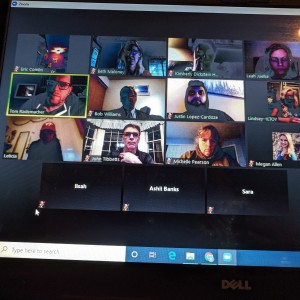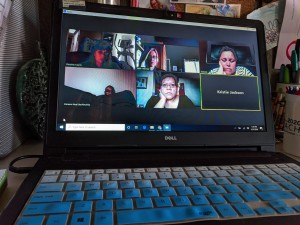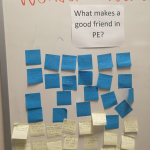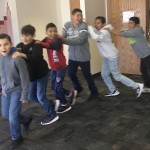Teaching is about relationships and community. As Carla Shalaby says in her fabulous book Troublemakers, “It is deeply relational, human work” (p. 172). I’m struggling to hit the right notes as we consider moving to online or distance learning (aka quaranteaching) as we weather the quarantine.
My daughter, an only child who loves the academic and social interaction of school, sobbed when she heard the news. I am taking it hard, as well. Not only do I foresee the myriad of equity issues distance learning will bring, I deeply regret not being able to give proper goodbyes, as I will not be returning to school next year. But I recently learned a Japanese phrase shikataga nai, which is untranslateable but generally expresses when things have gone wrong and you must learn to go with what is. So I am going with what is.
I am not new to the online world. I finished the last 18 months of my doctoral program online and found it a lonely experience but appreciated being able to work at my own pace. I am very familiar with the Zoom platform and have used it since quarantining to
meet up with the National Network of State Teachers of the Year, my Empatico Fellows, friends for happy hours, and my Arizona Teachers of the Year family for our monthly brunch.
Students need academic instruction, obviously, but I am more concerned about their mental well-being right now. I will plan (somehow!) engaging social studies and science lessons for my fifth graders for however long it takes. But I can’t hug them, I can’t make sure they are eating healthy snacks, and we can’t practice Mindful Monday together. No physical access to my students will take some adjusting.
Although we are on spring break, I’ve had parents reach out already. Some students are watching the news and are scared. One wants to know if we will be able to continue our Oregon Trail simulation we’ve been prepping for weeks. Another just wants a hug.
So at first, my lesson plans won’t have anything to do with science or social studies standards or curriculum. First, we’re going to talk and listen. We will release anxiety. We will brainstorm and problem-solve together. What can we do to stay healthy? What will our workspace be? How can we stay focused at home? We will certainly have lessons on online etiquette, such as muting yourself when it is not your time to talk and appropriate ways to chat and respond. We will DEFINITELY look at each other’s pets.
We’re going to play a version of the Playworks game “What are you doing?” to build our community. Here’s how you play: Allow a student to do whatever they want (appropriately, obviously) in front of the other students. As they perform their imaginary task, someone asks, “What are you doing?” Instead of explaining, the performer describes a new activity (that they are not doing) and the next child performs that imaginary task. The game continues until someone makes a mistake. When a player messes up, the next person steps up. It’s low risk and inevitably ends in gales of laughter.
I am planning assignments that foster activities to help them build connections to the people they are with at home and our classroom community. These will include assignments like “Perform an act of kindness, and “Write an email to a classmate.”
Lastly, we’re going to have a dance party.
Our relationships with kids are what keep most of us teaching. It is our relationships with students, families, and each other that will get us through this.
Resources:
Common Sense Media’s List of Emotional Intelligence Apps and Games
Stop, Breathe, & Think “Safe House Chill Pill” Mindful Meditation












Comments 1
I really enjoyed this and have found very similar approaches have been helpful for preschool. We started virtual class meetings last week and I used most of the time to let the kids talk as leaders. I would read a book and then each child got to share something from home. Nothing was profound, but I feel it is profound to give them an opportunity for leadership and control that orients them again. I did that for four days straight and I’m planning to do a more directed version of it this coming week by asking them to bring items with specific qualities. As you have clearly said, it’s the relationships that matter most. I know I can’t effectively run circle time with my students as passive observers, so it makes more sense to forego the instruction that is not developmentally appropriate at this time and get the most out of our time together through social connection. I’d love to hear a follow up to this blog about how it is going